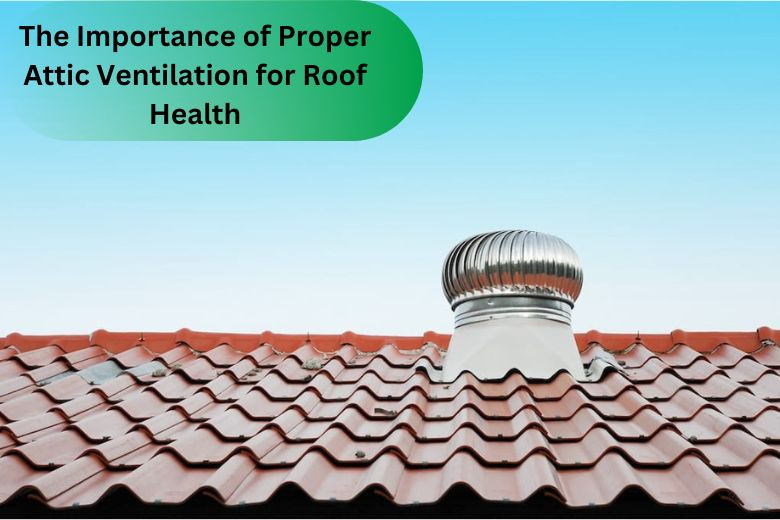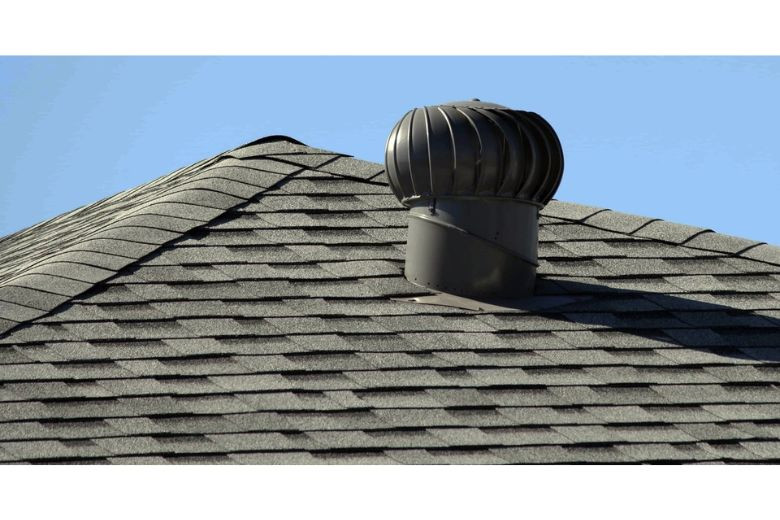The Importance of Proper Attic Ventilation for Roof Health
Posted on September 30, 2024 by Admin

Proper Ventilation What Most Homeowners Overlook One major part of the roof system that most, if not all, homeowners seem to neglect is proper ventilation. Proper roof ventilation will prolong your roof's life, make your home energy-efficient, and save you a lot of hassles, such as mold buildup and structural damage brought about by flashings that fail. Understanding why attic ventilation really matters for the health of your roof can help you take the necessary steps for protecting your house.
Why Attic Ventilation Matters
Importance of Proper Attic Ventilation Proper ventilation in the attic is the most critical feature for a healthy roof. This translates to a situation where, through ventilation, the temperature and moisture will get adjusted to their proper balance within the attic. In the case of a lack of proper ventilation, a balance in both heat and moisture is hindered, and several complications may pop up to threaten the integrity of your roof.
1. Prevents Moisture Buildup
The first one is the premier item in the list: an attic should be ventilated for good health of the roof and, in particular, for moisture control. Moisture may infiltrate into your attic from several directions, like from household activities such as cooking or showering. Without proper ventilation, this moisture gets trapped, hence giving way to growing mold and woods that rot easily. Ventilation drives out moisture, keeps the attic dry, and adds years to roof life.
2. Controls Temperature
Ventilation of the attic space is very necessary for maintaining proper temperature. In the summer, the heat can turn an unventilated attic into an oven; temperatures inside often reach as high as 140°F. This type of extreme heat can distort shingles, lowering their life expectancy. Poor ventilation during winter can let ice dams form on the roof. A warm attic may make warm, moist air melt the snow on a roof, which refreezes at the eaves; as a result, water is allowed to back up under the shingles and into the attic or house.

3. Increases Efficiency in the Use of Home Energy
This is yet another subtle way in which good attic ventilation is good for a roof: Proper ventilation provides balanced temperatures, hence reducing the workload for that HVAC system. You not only save on energy costs but also extend the life of your two heating and cooling systems.
4. Increases the Lifespan of Your Roof
This will prevent the accumulation of excess water in the attic, getting too hot in temperature, and losing energy; all of these three can bring about the general deterioration of your roof. Proper ventilation will prolong the life expectancy of your roof by avoiding moisture, regulating temperature, and enhancing the efficiency of energy. In effect, proper ventilation is a cost-effective investment in the long-term maintenance of a more damage-resistant, thus less expensive to repair, roof.
How to Ensure Proper Attic Ventilation
Proper attic ventilation is among the basic ways of maintaining a healthy roof, and can be done through some simple steps:
1. Setting up a Ventilation System:
There are lots of attic ventilation systems out there, including ridge vents, soffit vents, and attic fans. The mixture should be able to provide good air movement over the attic.
2. Regular Checks:
In your attic, always be on the lookout for poor ventilation. Some common indications of an extremely badly ventilated attic include mold, damp insulation, and a huge change in temperatures. Do not delay in repairing this problem to ensure proper ventilation.
3. Have a Professional Appraisal:
Have a professional appraisal of your attic ventilation. They can suggest something for you according to your needs, and make sure that your system works flawlessly.
Conclusion
In essence, proper attic ventilation keeps the roof healthy: it prevents moisture buildup, controls temperatures for improved energy performance, and prolongs the life of the roof. We shall draw upon our expertise and the best practices in attic ventilation to ensure no damage to the roof and to maintain it in the best possible manner for years to come.In fact, when you invest in your attic today, doing it properly is not to just save your roof; that investment largely adds to comfort and efficiency in your home. Improve attic ventilation: act now and live with the benefits for a healthy, sustained roof.
Also Read :
The Benefits of Roof Inspections Before Buying a Home
How to Choose the Best Roofing Contractor
The Importance of Sump Pumps in Flood-Prone Areas
How to Install a Tankless Water Heater: Pros and Cons
The Benefits of a Home Plumbing Maintenance Plan
Roof Safety Tips for Homeowners
The Impact of Algae and Moss on Your Roof
How to Deal with Roof Leaks During a Storm
How to Create an Electrical Maintenance Plan for Your Home
Faqs
-
1. What are some of the more common signs that indicate attic ventilation is poor?
Some common telltale signs of ventilation being poor within an attic include huge temperature extremes, a musty smell, growth of mold, drenched insulation, and ice dams forming on top of the edges of the roof during winter.
-
2. How does attic ventilation prevent roof damage?
Proper attic ventilation will help in the dissipation of moisture and in temperature control. This will avoid the growth of mold, decay of wood, and deterioration of shingles, which will then lead to roof deterioration.
-
3. What kinds of attic ventilation systems are available?
Common attic ventilation systems include ridge vents, soffit vents, gable vents, and attic fans. Each may be combined with others to ensure satisfactory airflow throughout the attic.
-
4. How often should I inspect attic ventilation?
You should inspect the attic ventilation at least twice a year, just before and after winter. This frequent inspection will help to maintain optimum ventilation by spotting the issues on time.
-
5. Can I improvise attic ventilation myself, or shall I have it done by a pro?
While very fundamental inspections and minor enhancements may be done by you as a homeowner, employing a professional to ascertain an adequate assessment of your attic by conducting a detailed examination and the installation of a ventilation system tailored toward answering the unique needs of your home is very important.
Recent Post
- Top Plumbing Service Providers in Arizona, USA
- Top 10 Electrician Service Providers in Alabama, USA
- Top 20 Roof Repair Service Providers in Alabama, USA
- The Role of Roof Insulation in Energy Efficiency: Tips and Tricks
- Understanding Roof Damage from Wildlife and How to Prevent It
- How to Choose the Best Roofing Contractor for Emergency Repairs
- Roofing Maintenance for Historic Homes: Preserving Architectural Integrity
- The Importance of Proper Attic Ventilation for Roof Health
- How to Identify and Prevent Roof Mold and Mildew
- The Best Practices for Removing Snow from Your Roof